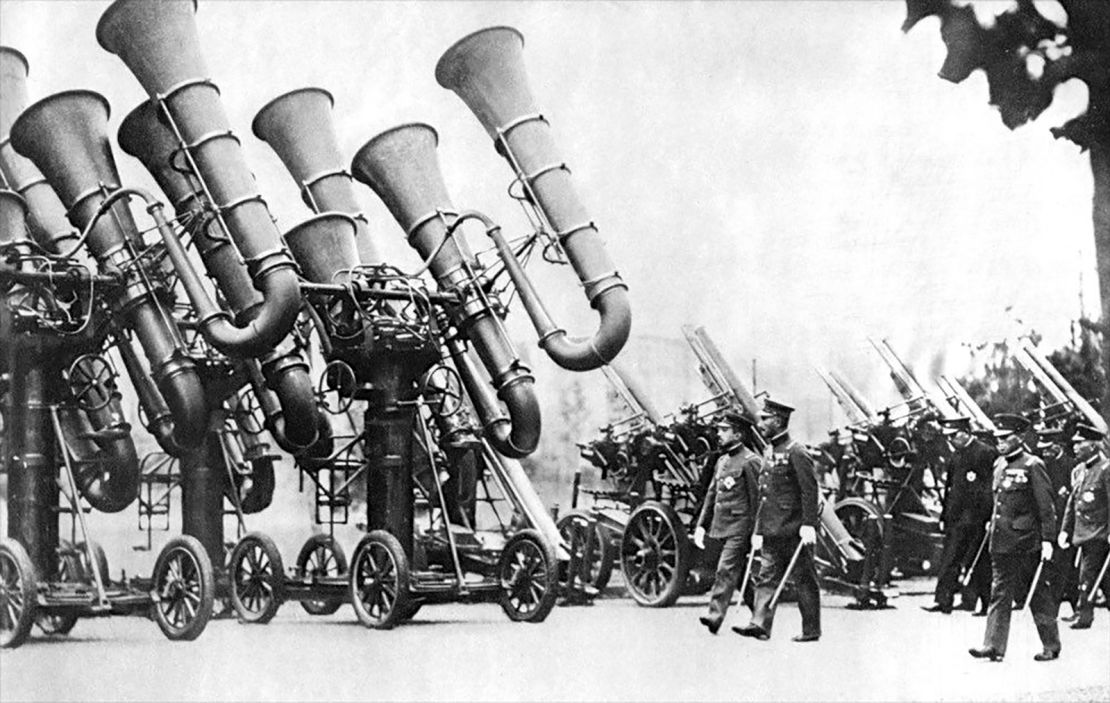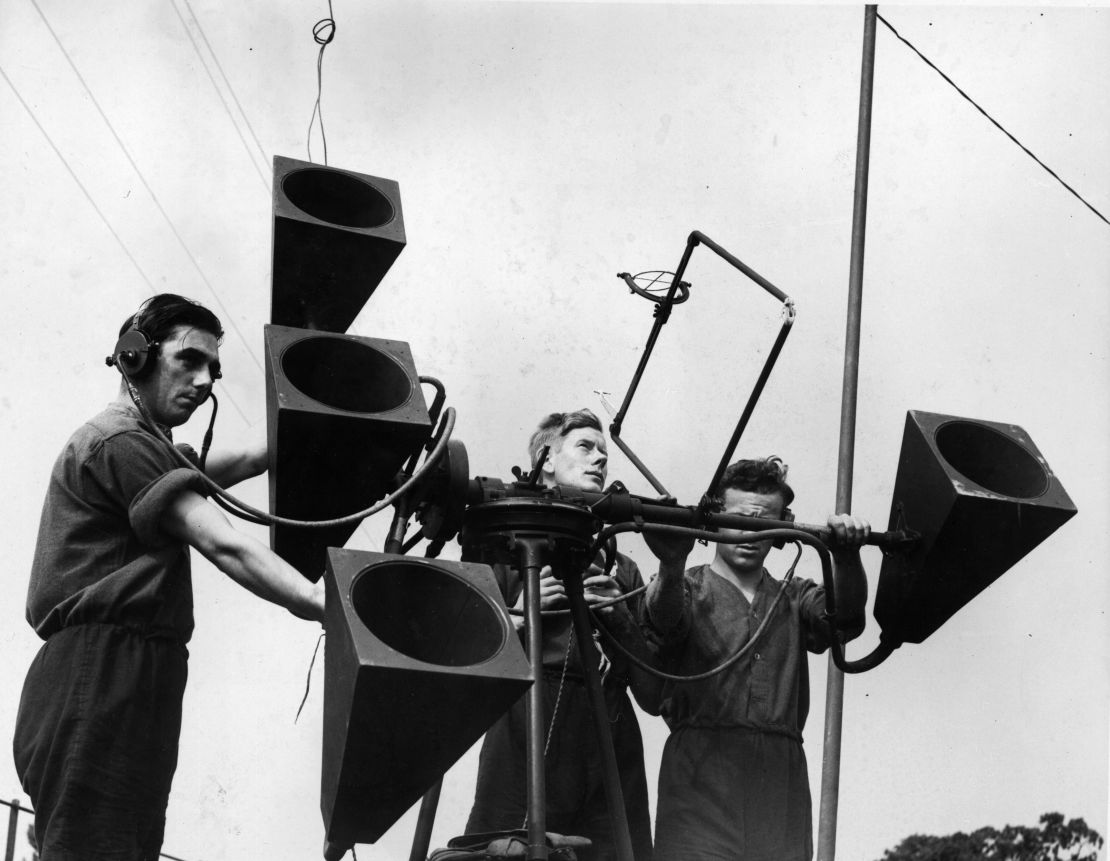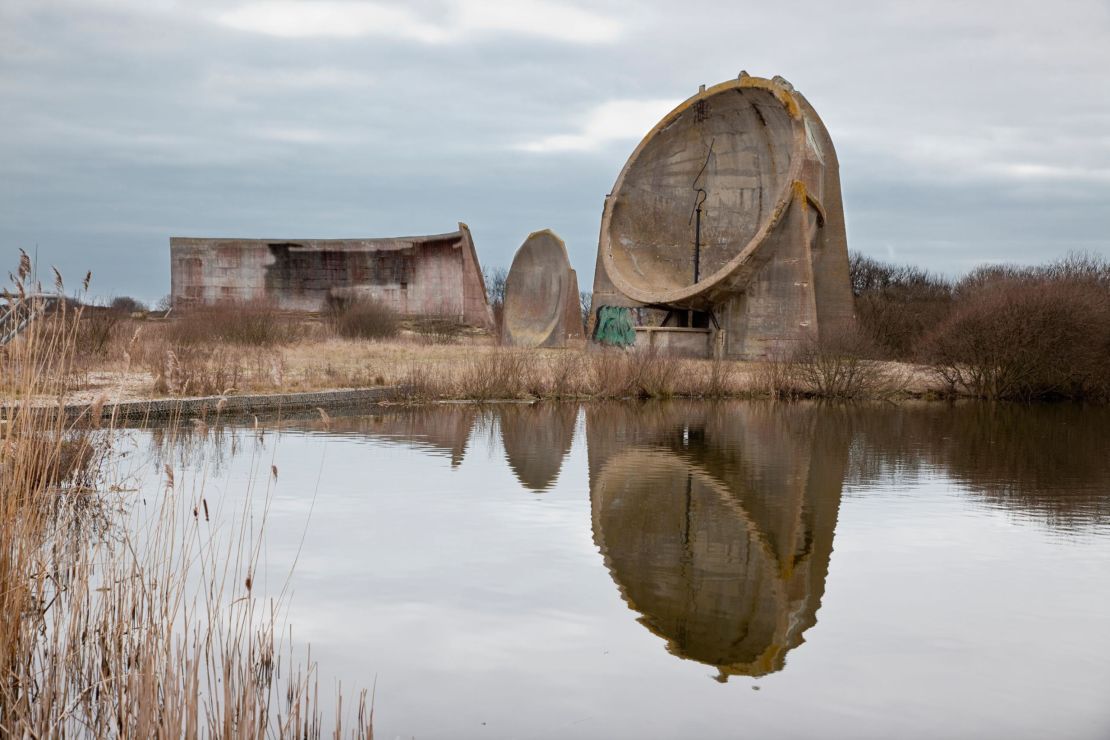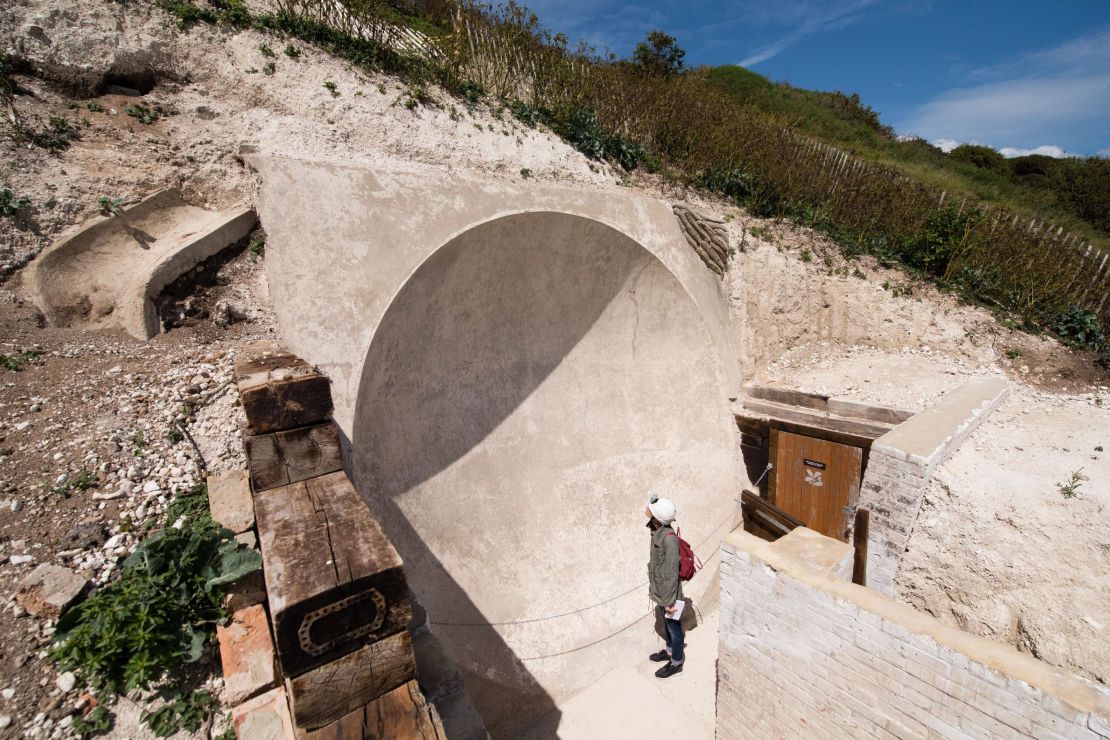Before the invention of radar during World War II, incoming enemy warplanes were detected by listening with the aid of “sound locators” that looked more like musical instruments than tools of war.
These radar forerunners, which earned the nicknames “war tubas” or “sound trumpets,” were first used during World War I by France and Britain to spot German Zeppelin airships. The purely mechanical devices were, essentially, large horns connected to a stethoscope.
“It was a development of artillery sound ranging,” explained Phil Judkins, a war historian and Visiting Fellow at the University of Leeds, during a phone interview.
“It had been noticed for quite some time that you could locate a gun if two or three or four different people listening to the gunshot each took a bearing.” Combining the bearings, or the measurements of direction between two points, would give the location of the gun. That same process was then applied to listening for aircraft.

Limited range
A common configuration of the device had three horns arranged vertically plus an extra one to the side. The central one in the set of three and the lateral one were used to get the aircraft’s bearing, while the remaining two were used to estimate its height. The operators would listen in through the stethoscope and tilt the horns until they got the loudest sound.
“That will then give you the direction, and with a little trigonometry it will give you the height of the aircraft,” said Judkins.

Sound locators were used near the frontline in conjunction with anti-aircraft guns, but their range was limited to just a few miles. “The number of times any enemy aircraft was actually shot down using them is very small, or at least the number of recorded occasions that we know about. But the number of times any enemy aircraft was shot down using fighters and so on was pretty small as well,” said Junkins.
Acoustic mirrors
To get better range, the British also experimented with a static type of sound locator, made of concrete and shaped like a dish or a curved wall, known as an “acoustic mirror.” These were first trialled in the southern and eastern coast of England during World War I and then built in about a dozen locations throughout the 1920s and 1930s. They were up to 30 feet (9 meters) in diameter, but a wall-shaped one in Kent, 60 miles south-east of London, spanned 200 feet (61 meters) in length. Many other countries including Germany, Japan and the United States were also developing sound locators at this time.

“The large concrete sound locators were obviously immovable but they had better range, about 10 to 15 miles, which would give one in Yorkshire listening to a Zeppelin approaching at a speed of 60 miles an hour a 15-minute warning of its arrival,” said Judkins.
Obsolete, but not forgotten
After 1930, microphones were used to pick up and amplify the noise, and later still, in 1939, the most advanced systems did away with sound completely and transformed the noise into a visual symbol on a cathode ray tube screen – an innovation that came from the inventor of stereophonic sound, Alan Blumlein.
“They eventually achieved ranges of up to about 20 miles in good conditions. The thing that overtook them, quite obviously, was the increasing speed of aircraft, which in the late 1930s were traveling at between 190 to 240 miles an hour,” said Judkins.

Planes were becoming too fast for sound locators, but by the outbreak of World War II, in 1939, the introduction of radar started making them obsolete anyway, although some sound locators were occasionally used until the end of the war. Radar had a range of 80 miles and played a crucial role in the Allied victory.
Several of the sound mirrors built in England (and one built overseas in Malta) survive to this day, and some have received restoration work.














